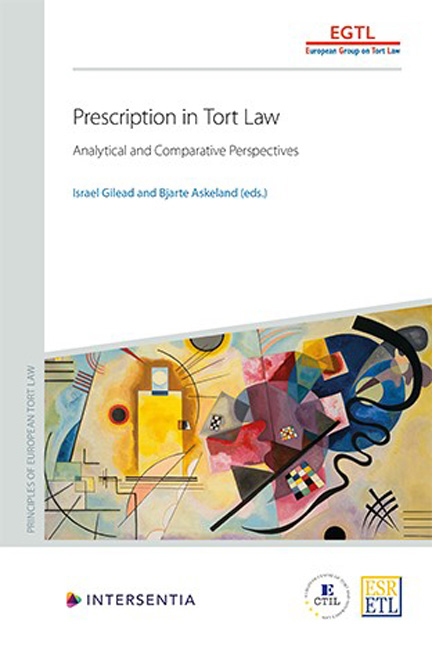Book contents
- Frontmatter
- Dedication
- Acknowledgements
- Contents
- List of Authors
- PART I THEORETICAL AND COMPARATIVE ANALYSES
- Analytical and Comparative Report
- Economic Analysis
- PART II PRESCRIPTION IN TORT LAW OUTLINED
- Case Scenarios
- Austria
- Belgium
- Czech Republic
- England and Wales
- France
- Germany
- Greece
- Italy
- The Netherlands
- Norway
- Poland
- South Africa
- Spain
- Switzerland
- United States
- European Union
- Appendix: Questionnaire
- About the Editors
United States
Published online by Cambridge University Press: 22 December 2020
- Frontmatter
- Dedication
- Acknowledgements
- Contents
- List of Authors
- PART I THEORETICAL AND COMPARATIVE ANALYSES
- Analytical and Comparative Report
- Economic Analysis
- PART II PRESCRIPTION IN TORT LAW OUTLINED
- Case Scenarios
- Austria
- Belgium
- Czech Republic
- England and Wales
- France
- Germany
- Greece
- Italy
- The Netherlands
- Norway
- Poland
- South Africa
- Spain
- Switzerland
- United States
- European Union
- Appendix: Questionnaire
- About the Editors
Summary
INTRODUCTION
In the US, the substantive rules of tort law are primarily determined by state courts and legislatures. As well, prescription of those claims is a matter for each state. Thus, different prescription rules and periods exist throughout the US, although there are some central tendencies among the states along with variations. In addition, tort claims against the US are governed by federal law, which provides its own statute of limitations.
In what follows, this report aims to address the issues raised by the Questionnaire by reference to legal rules that have gained broad or substantial acceptance across the different US jurisdictions, and will also try to note areas in which the law varies significantly among jurisdictions.
DEFINITION OF PRESCRIPTION
Prescription in tort law is a legal institution that prevents P from enforcing an alleged right against D because of the running of a specified period of time on the tort claim.
The subject of prescription, as can be seen from the above definition, is usually the right of P to tort remedy from D, mainly the right to damages for harm caused. This right to remedy comes into being once a right protected by tort law, such as the right to bodily and property integrity, or the right to reputation, is breached. To the extent that one conceives of the latter right (not to be harmed by tortious conduct) as a primary right, and of the former right (to tort remedy) as a secondary right, it is the secondary right which is the subject of prescription.
Only the first sentence is a definition of prescription. That sentence comports reasonably well with the understanding in the US, although the author would replace ‘institution‘ with ‘rule‘and substitute ‘between accrual of the tort claim and initiation of legal action‘ for‘on the tort claim.‘
- Type
- Chapter
- Information
- Prescription in Tort LawAnalytical and Comparative Perspectives, pp. 649 - 696Publisher: IntersentiaPrint publication year: 2020



